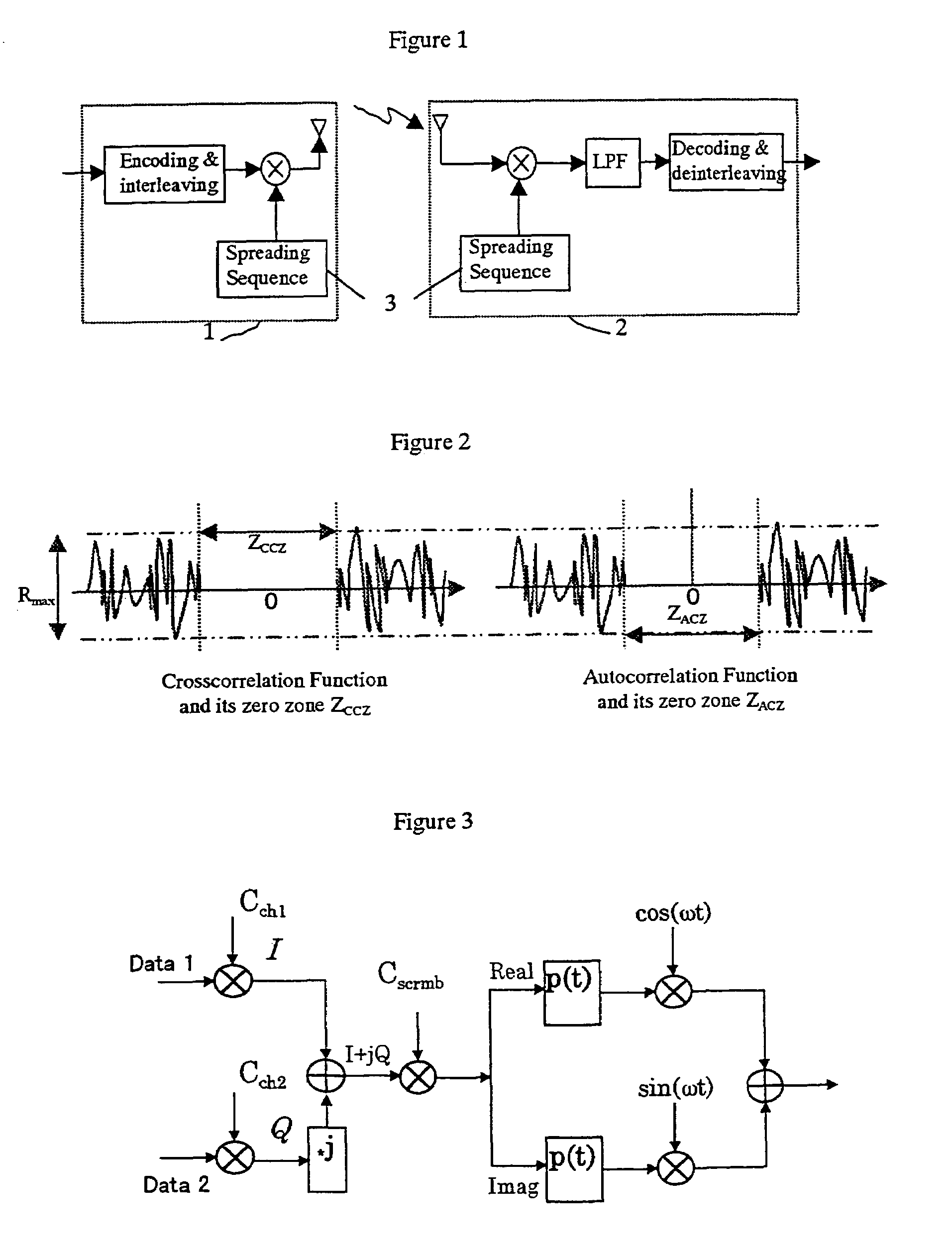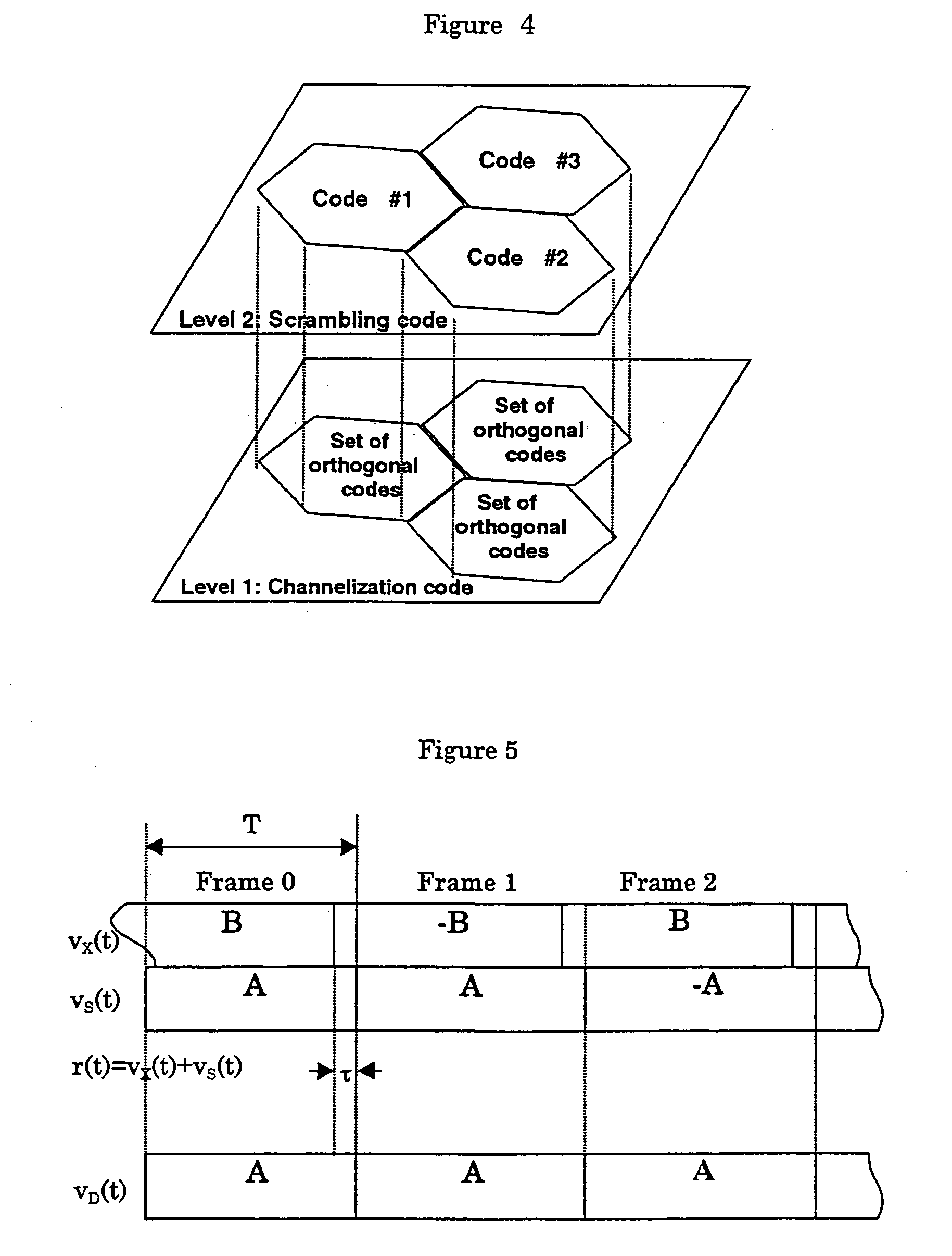Adaptive interference-free spread-spectrum system employing binary code sequence sets with zero correlation zone properties
a spread spectrum and binary code sequence technology, applied in the field of binary direct sequence (ds) spread spectrum (ss) system, can solve the problems of affecting the capacity and system performance of the ds cdma system, co-channel interference in the practical cdma system, etc., to eliminate the inter-path interference, and eliminate the multiple access interference
- Summary
- Abstract
- Description
- Claims
- Application Information
AI Technical Summary
Benefits of technology
Problems solved by technology
Method used
Image
Examples
Embodiment Construction
Preface
[0038]For better understanding of this invention, we will first describe various methods of constructing the sequence sets with desired ZCZ properties, then give the detailed description of the adaptive interference-free DS spread spectrum system, anti-multipath-interference DS CDMA system, anti-cochannel-interference DS CDMA system by employing the ZCZ code sets, and finally, present the extended framing method for practical implementation.
[0039]In regards to general code sequence set design method, the present inventors have published a number of publications, especially the book, “Pingzhi Fan and Michael Darnell, Sequence Design for Communications Applications, Research Studies Press, John Wiley & Sons Ltd, London, 1996, ISBN 0-471-96557-x, 516 pages”, and the paper, “P. Z. Fan and M. Darnell, On the construction and comparison of periodic digital sequence sets, IEEE Proceedings Communications, Vol. 144, No. 6, pp. 111—117, 1997”.
[0040]As for the binary sequence design wit...
PUM
 Login to View More
Login to View More Abstract
Description
Claims
Application Information
 Login to View More
Login to View More - R&D
- Intellectual Property
- Life Sciences
- Materials
- Tech Scout
- Unparalleled Data Quality
- Higher Quality Content
- 60% Fewer Hallucinations
Browse by: Latest US Patents, China's latest patents, Technical Efficacy Thesaurus, Application Domain, Technology Topic, Popular Technical Reports.
© 2025 PatSnap. All rights reserved.Legal|Privacy policy|Modern Slavery Act Transparency Statement|Sitemap|About US| Contact US: help@patsnap.com



